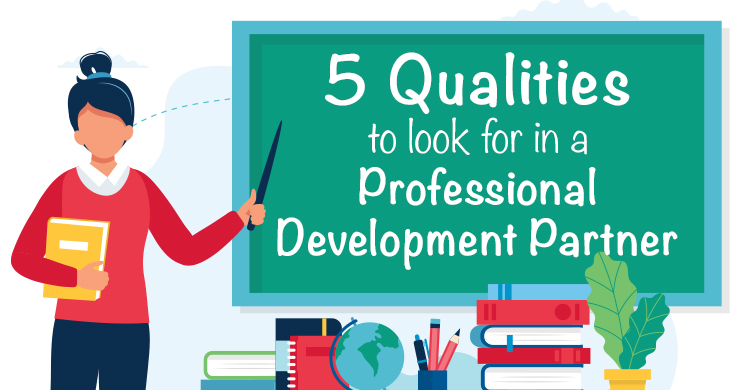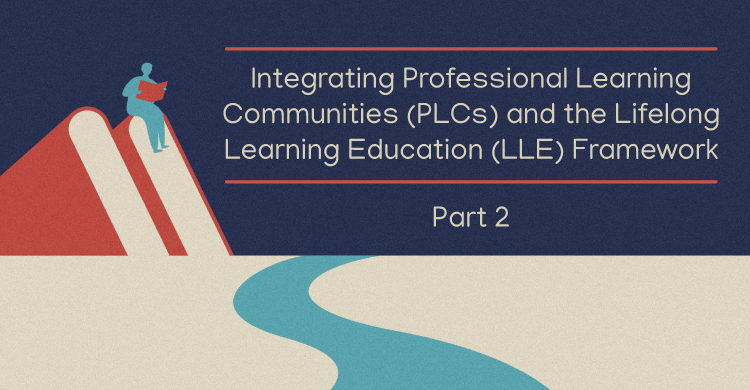Okay, be honest. Have any of your professional development decisions been made at the last possible minute, or in some cases, the last possible second? How many times have you primarily based your PD decisions on available funds? Have you ever brought in a professional developer based on his or her name and reputation even if the presentation topic did not target the learning needs of your faculty and staff? If any of these planning scenarios describe you, raise your hand. Go ahead. No one is looking. I certainly have my hand up.
Traditional PD planning is usually based on resource availability—money, people, and time. In fact, if you really think about it, much of our PD planning is often determined by resource scarcity. The conversation sounds something like “How much is in our PD budget? Okay, who can we bring in for that amount?” or “We’ve got our summer leadership institute next month. Find out who’s available to come in to present to our team . . . and we only have X to spend.” Yikes!
Stephen Covey (1989) taught us to “begin with the end in mind.” Educational researchers and authors encourage us to use “backward design,” moving us from whole to part. In golf, there are instructors who teach the “green-to-tee” concept where players start their shot planning from the green and work backward to the tee. Wow! If this concept works for researchers and golfers, it must be a good thing for professional development planning—right?
As a former building principal, the most effective, satisfying professional development I ever experienced was when I attended workshops or sessions with a team of teacher leaders. The benefits of attending with my teams were many. The networking opportunities during sessions, breaks, and downtime were invaluable. Personal and professional relationships were developed and enhanced. Mutual accountability became a standard by-product of our collective work. Professional development moved from being done to staff to being done with staff. Our teams would chunk out the session agendas to ensure that after each event our teams as a whole would have been exposed to every presentation and topic. Even before these events were over, we were already planning our entire yearlong professional development and starting to identify roles and responsibilities for each member of our team. We would ask ourselves what our school would look like or do differently in the future based on the implementation of our new learning. Then we worked backward to plan the specific steps and actions to accomplish our established goals that would fully make our new learning part of the school culture.
In schools and districts that function as professional learning communities, when leadership teams plan for professional development, they do so in a proactive (not reactive) way. Rather than assessing resources first, PLCs begin by assessing learning needs first and then work backward to determine the resources needed to accomplish the adult learning goals. Leveraging your resources to their fullest based on your long-range goals and desired outcomes will provide you and your teams with top-quality, targeted, and timely professional development.
Here’s a cautionary note to new school-based and district-level administrators and professional developers. Look carefully at the quality and design of professional development that you were exposed to earlier in your career. If you experienced last-minute, episodic, one-shot, say-and-spray professional development and that’s all you know, chances are excellent that you will pass those same experiences on to those you serve. You, however, can be that transition person who can break the legacy of ineffective professional development in your organization. Step back, take stock, surround yourself with a guiding coalition of professionals, and assess whether or not your professional development system meets the criteria and standards that will ensure the very best learning for your staff.
Now is the time to start planning the necessary professional development activities to support and move the PLC process forward in your organization. Don’t wait to start your planning at the beginning of the school year, or worse, after the year has started. It will be too late. Based on current needs assessment data of your staff, what are your main areas of focus for 2015–16 or even 2015–17? What are the best delivery systems available to meet your identified PD needs?
Once the decision is made about how to address your PD needs, plan how you will provide and support the PD activities after the event. In other words, plan well in advance of the school year who is going to do what by when throughout the year. Answer these questions: When the PD session is over, how will you embed the key learning into your culture? How will you continue to breathe life into the learning? If after the main event you plan well in advance and if you purposefully act on that plan by providing job-embedded PD on a regular and consistent basis, your efforts to become a high-performing collaborative learning culture will be rewarded. It’s okay to put your hand down now.
Reference
Covey, S. R. (1989). The 7 habits of highly effective people. New York: Simon and Schuster.
[author_bio id=”46″]






